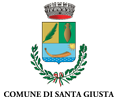Discover Romanesque: Peoples and Legends
San Gavino
In the second half of the 11th century, in an area known as Monte Agellu, near the ancient Turris Libisonis (the current Porto Torres), a majestic basilica was built to host the transferred mortal remains of San Gavino and his companions Protus and Januarius. The saint’s vicissitudes, inseparably associated to his mates’, are narrated in several sources mingling legendary aspects and historic facts. The Passio tells that the priest Protus and the deacon Januarius, born in Sardinia, were used to preach the Gospels in Monte Agellu when persecutions started under the emperor Diocletian. Imprisoned and tortured in Turris by Barbarus, governor (preside) of Sardinia and Corsica, they were sent to jail. There they were guarded by Gavinus, a private soldier who, impressed by Protus and Januarius’s words and behaviour, resolved to set them free and, later, to profess himself a Christian. To pay for this, he was beheaded by the sea, his body thrown from the crags into the waves, where it disappeared. The martyr appeared in a vision to Protus and Januarius, who had taken shelter in a cave, inviting them to go back to Turris to receive their own martyrdom. They obeyed and were thus beheaded on 27th October. The church of San Gavino a Mare was raised in the place where the three martyrs were buried, in a locality called Balai-vicino. In contrast with the Passio, another source reports that the three martyrs were thrown into the sea following their beheading. It is said that their bodies appeared right where the small church of San Gavino Decollato (S. Bainzu Iscapitadu in Sardinian language) would be raised, in a locality called Balai-lontano.
























